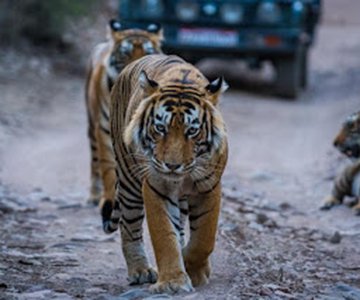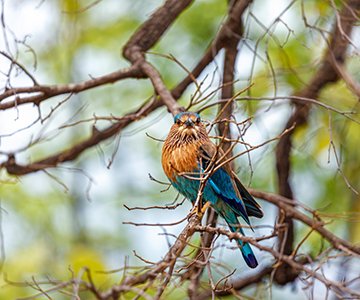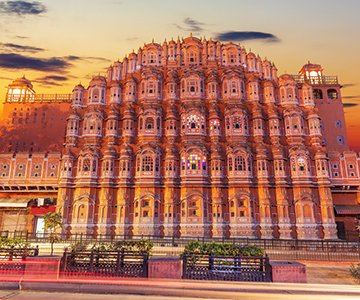- Home
- »
- North India Tours
- »
- Spiritual Holidays – Buddhist Pilgrimage
Spiritual Holidays – Buddhist Pilgrimage
Destinations
Varanasi - Bodhgaya - Nalanda - Rajgir - Kushinagar - Lumbini - Sravasti - Agra - Delhi
Duration
07 Nights / 08 Days
Customize This Tour
This itinerary is customizable according to your need.
Book This Tour
Itinerary
Day 01 : Arrive in Delhi
Collect your luggage and change to domestic departure to connect to Varanasi.
You are welcomed at airport/rail station and transferred to the hotel.
Varanasi – amongst the oldest living cities in the world, is also the holiest of Hindu pilgrimages. Thousands of devotees come here daily to the banks of River Ganges to take a ritual dip and cleanse their souls and to worship at its many temples. It is not just important for Hindus but has links with Buddhism and Jainism as well. It was at Sarnath that Buddha preached his sermon and Lord Mahavir revealed his Jain Philosophy at Kashi-nearby. Varanasi is to Hindus is what Bethlehem to Christians.
Afternoon, you are driven to visit the buried Buddhist city of Sarnath, northeast of Varanasi. Lord Buddha having achieved enlightenment at Bodhgaya, came to Sarnath to preach his message of the way to nirvana. Later, Ashoka the great Buddhist emperor erected magnificent stupas and monasteries at Sarnath. What is visible today are the ruins of the once flourishing Buddhist monastery; the museum here houses an excellent collection of Buddhist art and sculptures.
Day 02 : Varanasi – Bodhgaya

Ganga ghat, varanasi
Day 03 : Bodhgaya – Rajgir
Day 04 : Rajgir – Kushinagar
Proceed to Kushinagar, where Lord Buddha passed into Mahaparinirvana at the age of 80.
Stop en-route, believed to be the first republic of the world. Vaishali was the center
of 2nd Buddhist Council held to discuss the ten points of rules of conduct. It was here Amrapali, a beautiful dancer, after she was impressed by Buddha’s teaching became a
Buddhist nun. Continue to Kushinagar and check into hotel.
Afternoon, tour Kushinagar; it was here Lord Buddha breathed his last, after uttering
“Behold now, brethren, I exhort you, saying, decay is inherent in all component things! Work out your salvation with diligence!”. Important sites of Kushinagar are Rambhar Stupe which is supposedly the spot where Buddha was cremated and the Mahaparinivana Temple dedicated to the great incident.
Day 05 : Kushinagar – Lumbini - Bhairawa
You are driven to Lumbini on the Indo-Nepal border.
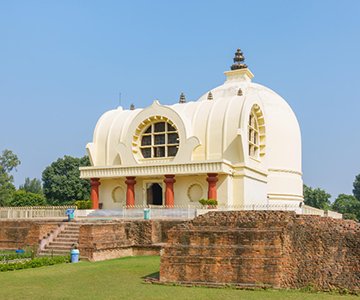
parinirvana stupa temple, kushinagar
Day 06 : Bhairawa – Sravasti – Lucknow
Day 07 : Lucknow – Agra - Delhi
Board your (0545-1100Hrs) express train to Agra with packed breakfast from the hotel. You are picked up from Tundla railway station and driven to Agra. Lunch in a quality restaurant and then proceed for sightseeing tour of Agra. Visit the red sandstone fort – Agra Fort built in 1565 by Mughal ruler Emperor Akbar and then visit one of The Seven Wonders of World – The Taj Mahal, an UNESCO World Heritage Site. Taj Mahal was completed by Emperor Shah Jahan in 1653 as a memorial to his beloved queen, Mumtaz Mahal. Explore this beautiful mausoleum in pure white marble which took 22 years and 22000 craftsmen to build.
Board your (2115-2350Hrs) express train to Delhi, after your sightseeing tour of Agra. Our representative will greet you and transfer to your hotel.
Day 08 : Delhi - Onward Journey
Post breakfast, check out from your hotel. Proceed to explore Old & New Delhi the capital city of India. Drive past the Red Fort built by Emperor Shah Jahan (1639-48), the creator of The Taj Mahal.
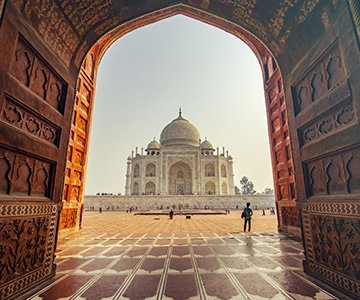
Taj Mahal, Agra
Then visit Raj Ghat – the cremation site of Mahatma Gandhi. Continue to the Qutab Minar (1193 AD), a striking medieval 73 m. high tower of victory built by the slave dynasty. Within the Qutab complex, amidst the ruins of Quwat-ul-Islam Mosque stands the Iron pillar which has stood the vagaries of weather and has not rested over 1500 years. Later visit the Mughal emperor Humayun’s tomb followed by a photo shoot at the India Gage and a drive through the New Delhi area – through the diplomatic enclave, Government buildings – Parliament House, India Gate. Later you are dropped off at Delhi airport to commence your onward journey.
We end our services in Delhi airport.
Inland travel by air: Delhi – Varanasi.
Package Includes
- Double/twin sharing accommodation including dinner and breakfast.
- Transfers and sightseeing by air-conditioned vehicle.
- Visit Taj Mahal & World Heritage monuments.
- Sunrise boat cruise in river Ganges.
- Services of government licensed local guides as per itinerary.
- Exclusive: bicycle rickshaw ride in Varanasi.
- Supply of bottled mineral water throughout the tour.
- Train travel: Lucknow-Tundla; Agra-Delhi in air-conditioned coach.
- Entrance fee to monuments as per itinerary.
- Applicable government taxes.
Package excludes
- Any international flight tickets.
- Charges for visa & travel insurance.
- Expenses of personal nature.
- Any meal other than what is mentioned in the inclusion.
- Camera and video camera fee.
- Tipping to guide, driver, and hotel staff.
Hot Selling
Related Tours
Delhi - Ladakh - Ulley Valley - Gir & Nagarhole National parks - Mysore.
17 Nights / 18 Days
Mumbai - Gir Lion Park - Agra - Khajuraho - Panna & Bandhavgarh Tiger Parks - Delhi
11 Nights / 12 Days
